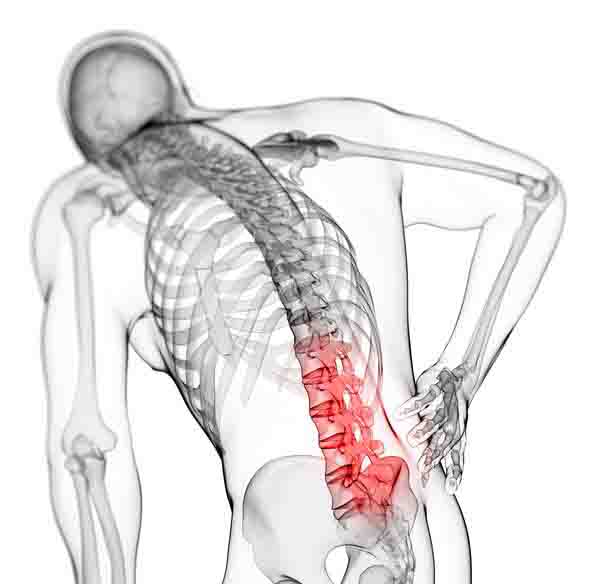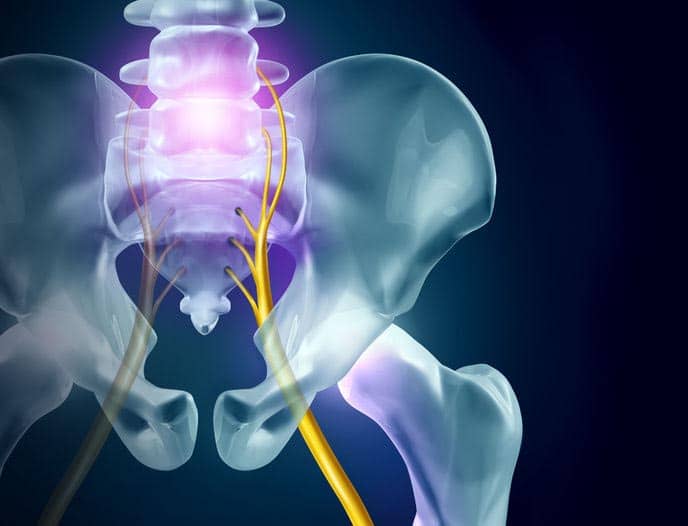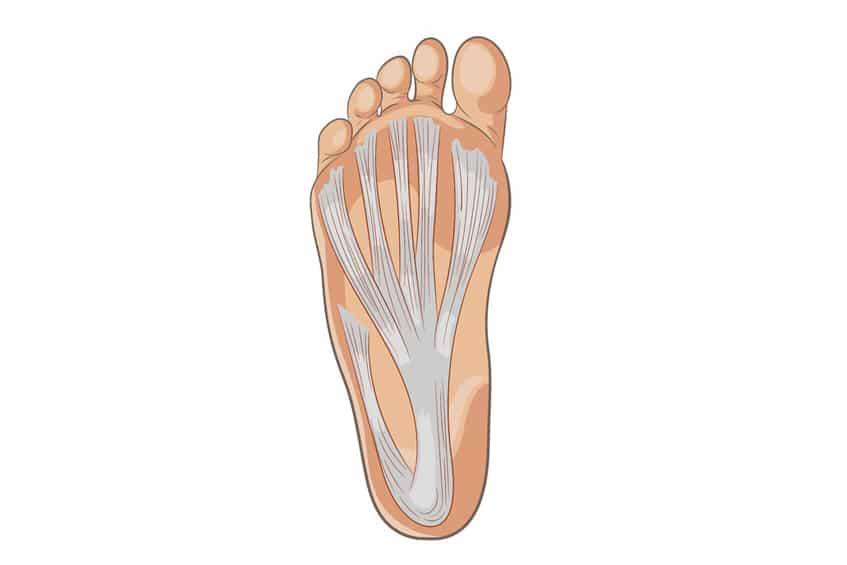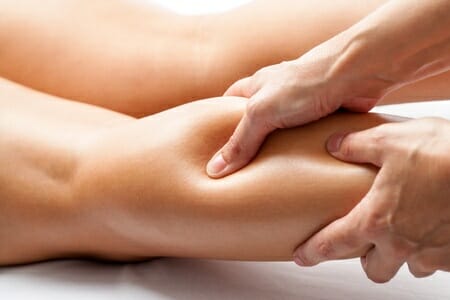We Did it! We’re a Finalist!
05-Jul-2019
Winners will be announced July 31st…and a winner of the massage raffle will announce shortly after! Thank you to all who participated and supported RCMT!
Neck, Back Pain and the Postural Puzzle
26-Apr-2019
The human body is different than most mammals; we are bipeds. We work in seated positions, move in and out of vehicles, carry loads in our arms and bags over our shoulders….all in defiance of gravity and balanced on two limbs. Such mobile dexterity is quite an evolutionary feat but not without some vulnerability. Our anatomy is structurally complex but easy to strain or injure.
The two weakest areas are the neck/shoulders and lower back/hips. These are by far the most common areas of focus every massage therapist, chiropractor and physical therapist address with their clients/patients.
From the ground up—
Our pelvises have had to structurally evolve, the hip joints rotating inward in order to accommodate walking upright. This has created a bigger challenge for childbirth. Women have wider pelvises flared outward (wider hips) to accommodate birthing, a ‘laborious’ process much more difficult for human females than their mammalian counterparts.
This upright mobility has created a weak spot where the spine, carrying the weight of the upper body, is connected to and protected by the sacrum and ilium. Think of it like a tree trunk (our spine) carrying the weight of the heavy tree top (upper body and arms) and rooted in the sacrum and ilium (our hips). Bending over, carrying loads in front of us, and yes even sitting for long periods can strain where the trunk is connected to its roots in the ground. To be strong, it requires solid ground. The keys to providing support in this area of the lower back are strong core muscles and good posture!
When the muscles of the abdominal region are strong, they provide movement of the spinal vertebrae AND the structural strength and integrity that reduces the chance of injury. These muscle groups are both the ‘engine’ and the ‘tethers’ to the structural armature of the skeleton. Getting a strong core may sound daunting, but really a few exercises for 10-15 mins a day is all it takes to give you the added support.
Pains in the necks and world on your back—
The other problem for human anatomy is the neck and shoulder area. Our arms can do amazing things due to the range of motion in the shoulder girdle. Have you ever noticed how limited a dog’s shoulder movement is when they shake your hand? Reaching up to our knee level is about their limit. We can reach up, out and even scratch our own backs with varying abilities. While this complex anatomy of the shoulder allows us to swim with beautiful full strokes, hang from bars, bounce our babies in the air and a myriad of other movements, it is not without its downsides. The more complex a system, the more likely it can be damaged or fail. Good posture and spinal alignment are key to keeping our range of motion at its optimal.
Our heads weigh as much as a bowling ball and are balanced on a point not much bigger than our thumb. Add to this that we are always looking down into our devices or slouching in our chairs stressing the joint connecting our spine to the cranium. The head is too often hanging from the threads of a complex web of muscle fibers surrounding our necks. No wonder we often experience neck pain or tightness or even tension headaches.
Posture as a good habit—
We are creatures of habit. Unfortunately, time is not our friend as we age. Years of bad postural habits can take a toll on our bodies, stressing it more than was necessary. The best we can do is remain aware of how we sit, stand and work and distribute our weight as evenly as we can. Create a simple workout routine that works for your lifestyle. With some work, you can set up good habits that reinforce vibrant physical health.
Ergonomic work stations are very beneficial if not critical for those who have desk jobs. Standing desks are good, but variable desks allow for more options during the workday. Our bodies are meant to move—get up and stretch, go for a walk during lunch.
We often lose height as we age; Compression of joints, loss of muscle strength and poor postural habits contribute to this. While not totally avoidable, we can greatly reduce this process. After a certain age, our investment in self-care should become more important to our vitality in our later years. Self-care can mean different things to different people. Regular chiropractic care, massage, exercise, diet, yoga, and proper footwear are all good means to staying healthy and maximizing the experience we enjoy in our physical bodies.
Massage as relief—
Bad posture and weak muscles often lead to tightness or even injury. Massage is great way to relieve some of the discomfort, balance muscle groups to improve posture, and add flexibility and range of motion to movement. It can also bring awareness to one’s own body so you can create better postural habits.
There is not one panacea to good spinal health; Genetics, occupation, lifestyle and awareness all contribute to our experience. The body is incredibly resilient and adaptable if we give it the conditions it needs to thrive. Years of neglect has its cost. If you love your body and give it the self-care it wants from an early age, you can greatly improve the quality of your life, live with less pain, have more fluidity of movement, and thus, more joy in the physical world.
Rod Cain is owner of Rod Cain Massage Therapy in Burlington with 27 years of experience in the field of massage.
Sciatica: Cause, Prevention and Management
06-Jan-2019
Sciatica is a condition anywhere along the sciatic nerve which begins in the lower lumbar area, but mostly under the sacrum, branching to both sides of the buttocks and down each leg. These neural pathways control movements of the legs as well as involuntary sensations, and to some degree bowel and bladder control. The pain associated with sciatica can vary significantly: mild ache to burning in the hip, sharp pain on movement, numbness or discomfort along the limb, tingling or weakness in the leg or foot. Typically, the symptoms affect only one side.
The cause can equally be varied: occupational or repetitive motion, bad posture, disk herniation or osteoarthritis. Inflammation from these result in the impingement of the neural pathway. As the pain and inflammation increases, so do spasms and tightness of the surrounding muscles which add to the problem.
There are many things you can do on your own to alleviate and address the discomfort of sciatica:
—Stop carrying items such as wallets in the back pockets. Sitting on objects can directly impinge the neural pathway.
—Stop crossing your legs while sitting. Leg crossing shifts more weight onto one side directly over the neural pathway. It also encourages curvature in the lumbar/sacral area adding to muscle tightness and neural blockages.
—Work on good posture. Sitting and standing with good posture is something most of us work on habitually—changing bad habits to good ones. It’s a process. Setting up good ergonomic environments in our daily routines can have profound effects on our spinal health.
—Exercise. Targeted stretching and strength training can greatly support the vertebrae (disks), decrease the compression of the bursa between them and increase the range of motion in the pelvic area. Core exercises of the abdomen greatly enhance not only strength but muscle balance front to back and side to side which can lead to overall improvement of posture.
—Massage. Deep tissue work, especially when incorporating range-of-motion movements and stretching can be a great passive way to ‘free up the congestion’ that leads to sciatica. Massage of tight muscles in the lumbar and gluteal areas can also help relieve the pressure around the nerves.
Severe cases of sciatica can cause bladder or bowel problems or can be excruciatingly painful. In such cases, one should seek medical advice. Fortunately, most cases are mild and manageable and like most disorders are best addressed before they become severe. Symptoms can reoccur or progress, so it’s best to see it as something to manage—understanding the root cause and addressing any habits or routines that are the underlying causes.
Plantar Fasciitis and Massage Treatment
27-Apr-2018
Often a condition of impact sports such as tennis, aerobics or running, plantar fasciitis is an inflammation of the soft tissues on the underside of the foot ranging from the base of the toes to the heel. The cause may not even be in the area where pain and discomfort are felt. Look for tightness, scar tissue or adhesions in the calves or hamstrings. Are the hips tight resulting in a decreased gait distance when running? Is the foot making proper contact during exercise? Is there an under or over-pronation (inward or outward turn) of the leg? The connective tissue along the bottom of the feet can be greatly affected by the distribution of your weight, especially during workouts. As your feet’s built-in shock absorbers, this web of connective tissue, when stressed, can translate into increased inflammation. This is especially true at the insertion points of tendons into bones or the surrounding padded, fleshy areas.
The arch is also a shock absorber, one critical to the architecture of the foot. High arches or ‘flat’ feet (those with little arch) are more likely to experience the pains of plantar fasciitis. Orthotics are a type of prosthetic used to cushion and support the arch and are best customized by a professional specifically for the wearer. They are often made for the activities for which they are used (work, running, standing) and can be switched-out between shoes. Orthotics can also help realign the foot so that it makes proper contact with movement.
Flat shoes or flip-flops do not offer the type of support for wearing over long periods or on hard surfaces. Proper footwear becomes critical in both workouts and between.
Age can also be a contributing factor…as we get older, the integrity of the foot’s architecture declines and the ability for soft tissues to repair becomes slower. For this reason, the condition is more common for those who are active after 40. Added body weight can also play a role, increasing the load-bearing stress.
Deep tissue massage is a combination of techniques applied over calves, hamstrings, Achilles tendon and points along the ankles and feet to lengthen and relax muscle fibers. The idea is to increase flexion and range of motion at the ankle and smooth tight leg muscles. Direct, deep work on the painful areas is not recommended. I often advised clients to ice the area following an intense workout, treating it as an injury.
Manual Therapy journal published an article in September 2013, titled “Deep massage to posterior calf muscles in combination with neural mobilization exercises as a treatment for heel pain: A pilot randomized clinical trial”, explains the efficacy of deep massage used in combination with neural mobilization exercise. 69 patients were involved in a single-blind study randomizing into either the deep massage or ultrasound group. In the study, “. . . therapists massaged the medial and lateral aspects of the posterior calf from both a medial and lateral approach. A mild pain response was generated by deep manipulation using thumbs or elbow,” according to Massage Today. The massage group also received calf stretches and a neural mobilization exercise. The conclusion stated the massage group displayed clinically and statistically significant improvements in comparison to the ultrasound group.
If you are experiencing pain in the bottom of the foot (or feet), contact your healthcare practitioner to evaluate the problem and to find solutions. Often simple solutions or the right bodywork can bring the relief you need…and your feet will love you for it!
Rod Cain is a massage therapist with 26 years of experience in the industry and owns a private practice, Rod Cain Massage Therapy in Burlington, Williston and Essex, Vermont.
Finding Quality Massage in Burlington, VT
27-Feb-2018
We are lucky to live in an area with many holistic healthcare practitioners and massage therapists in Vermont are certainly abundant. When selecting a therapist look for characteristics of professionalism: experience, easy-of-booking, and quality reviews on Google, Yelp and Facebook. The best therapists are usually booked in advance so plan accordingly. If you’re visiting the Burlington, Vermont area and plan to make massage part of your relaxing vacation, be sure to book along with your accommodations and/or flights. Remember, like most things in life, you get what you pay for…so spending a few extra dollars up front is far better than leaving disappointed. If you like deep work, be sure to ask if that is a specialty; Many therapists love to receive deep work and should be able to adjust to your comfort level.